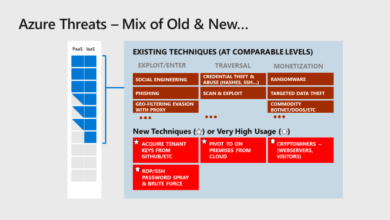
Cyber Attacks in UK Leading to Silent Stealing
Cyber attacks in UK leading to silent stealing are a growing concern, silently draining businesses of valuable data and resources. This insidious form of cybercrime often goes undetected for extended periods, allowing attackers to amass significant information before being discovered. We’ll delve into the various methods employed, the devastating consequences for victims, and most importantly, how to protect yourself and your business from this silent threat.
From sophisticated malware to insider threats and supply chain vulnerabilities, the methods used are diverse and constantly evolving. The impact extends far beyond immediate financial losses, damaging reputations and eroding customer trust. Understanding the landscape of these attacks is crucial for businesses of all sizes operating in the UK.
Types of Silent Stealing Cyber Attacks in the UK

Silent data exfiltration, the clandestine removal of sensitive information from a system without detection, is a growing threat to UK businesses. These attacks often go unnoticed for extended periods, leading to significant financial losses and reputational damage. Understanding the methods and vectors used is crucial for effective prevention and mitigation.
The sophistication of these attacks varies, from relatively simple techniques leveraging readily available tools to highly complex, targeted operations. The common thread is the stealthy nature of the operation, designed to avoid triggering security alarms.
Silent Data Exfiltration Techniques
Several techniques enable silent data exfiltration. The following table Artikels some common methods, their targets, how they operate, and the challenges in detecting them.
| Technique | Target | Method | Detection Challenges |
|---|---|---|---|
| Web Shells | Web servers, databases | Compromised web applications allow attackers to upload and execute malicious code, enabling data extraction. Data is often sent to remote servers in small, fragmented chunks to avoid detection. | Difficult to detect unless proactive security measures such as web application firewalls (WAFs) and intrusion detection systems (IDS) are in place. The fragmented nature of data transfer makes it hard to identify malicious activity. |
| Living off the Land Binaries and Scripts (LOLBAS) | Various systems | Attackers leverage legitimate system tools and scripts to exfiltrate data, making it harder to distinguish malicious activity from normal system processes. | Relies on advanced threat detection techniques that can identify unusual patterns in the use of legitimate tools. Requires thorough monitoring and analysis of system logs. |
| Data Compression and Encryption | Sensitive data files | Attackers compress and encrypt stolen data to reduce its size and make it harder to detect. This data is then transferred through various channels, such as email or cloud storage services. | Requires deep packet inspection and analysis of encrypted traffic. Detection relies on identifying unusual data transfer patterns and unusual file sizes. |
| DNS Tunneling | Various systems | Data is exfiltrated by encoding it within DNS queries, leveraging the fact that DNS traffic is often less scrutinized than other network traffic. | Requires specialized security tools capable of inspecting DNS traffic for hidden data. Detection relies on identifying unusually high volumes of DNS queries or unusual patterns within the queries themselves. |
Common Vectors for Silent Data Breaches in UK Businesses
Understanding the entry points for attackers is vital in preventing silent data theft. Several common vectors facilitate these breaches.
- Phishing Emails: These remain a highly effective method, often using sophisticated social engineering techniques to trick employees into revealing credentials or downloading malware.
- Malicious Software (Malware): Viruses, Trojans, and ransomware can all be used to exfiltrate data silently. Many malware strains are designed to avoid detection by anti-virus software.
- Vulnerable Software and Applications: Outdated or unpatched software creates significant vulnerabilities that attackers can exploit to gain unauthorized access.
- Compromised Third-Party Vendors: Attackers may target a company’s supply chain, compromising a third-party vendor to gain access to the target organization’s systems.
- Insider Threats: Malicious or negligent employees can inadvertently or intentionally facilitate data breaches.
The Role of Malware in Facilitating Silent Data Theft
Malware plays a central role in many silent data theft operations. It provides attackers with persistent access to systems, enabling them to exfiltrate data undetected over extended periods.
Advanced persistent threats (APTs), for example, are sophisticated malware strains specifically designed for long-term, covert data exfiltration. These often incorporate techniques like rootkit functionality to hide their presence and evade detection. Furthermore, some malware utilizes techniques such as process injection to avoid detection by traditional security software.
The use of custom-built malware, tailored to specific targets and infrastructure, further complicates detection and response. This level of sophistication requires a proactive and layered security approach, including advanced threat detection and incident response capabilities.
Impact of Silent Stealing on UK Businesses
Silent data theft, often undetectable for extended periods, poses a significant threat to UK businesses of all sizes. The financial repercussions can be devastating, ranging from direct monetary losses to the substantial costs associated with incident response, legal fees, and reputational damage. Beyond the immediate impact, the long-term consequences can severely hinder growth and sustainability. Understanding the scope of this threat is crucial for proactive risk management.The insidious nature of silent stealing means that breaches often go unnoticed until significant damage has been inflicted.
This delayed discovery compounds the problem, allowing attackers more time to exfiltrate sensitive data and potentially exploit vulnerabilities for further malicious activities. The consequences extend far beyond simple data loss; they can impact business operations, customer relationships, and overall market standing.
Case Studies of Silent Data Breaches in UK Businesses
The following table showcases some examples (note: Specific details of many real-world cases are often kept confidential due to ongoing investigations or legal reasons. The examples below represent generalized scenarios based on publicly available information and reporting trends):
| Company | Type of Attack | Impact | Response |
|---|---|---|---|
| Hypothetical Retail Company A | Malware infecting POS systems, exfiltrating customer payment data | Significant financial losses due to card fraud, fines from regulatory bodies (e.g., the ICO), loss of customer trust, damage to brand reputation, and legal costs. | Implemented enhanced security measures, notified customers, cooperated with law enforcement, and invested in fraud prevention technologies. |
| Hypothetical Manufacturing Company B | Insider threat involving an employee stealing intellectual property via cloud storage | Loss of competitive advantage, potential legal action from competitors, damage to investor confidence, and disruption of product development. | Improved access controls, enhanced employee training on cybersecurity best practices, and implemented data loss prevention (DLP) tools. |
| Hypothetical Financial Services Company C | Advanced persistent threat (APT) targeting customer financial data | Significant financial losses due to fraudulent transactions, reputational damage, loss of customer confidence, and regulatory penalties. | Implemented a comprehensive incident response plan, engaged cybersecurity experts, cooperated with law enforcement, and improved security monitoring. |
Long-Term Effects on Customer Trust and Business Operations
Silent data breaches can severely erode customer trust, leading to a decline in sales, difficulty attracting new customers, and increased difficulty in securing funding. The reputational damage can be long-lasting, impacting the company’s ability to compete effectively in the market. Furthermore, the operational disruption caused by a breach can be substantial, requiring significant time and resources to investigate, remediate, and recover.
This disruption can negatively affect productivity, profitability, and overall business continuity.
Hypothetical Scenario: Cascading Effects on a Small UK Business
Imagine a small bakery, “The Daily Loaf,” in London. A silent data breach occurs via a compromised email account used for online orders and customer management. The attacker gains access to customer addresses, payment information, and recipes. Initially, The Daily Loaf doesn’t notice the breach. Over time, customers begin reporting fraudulent charges.
The reputation of The Daily Loaf suffers, leading to a drop in orders. The financial impact is severe, compounded by the cost of investigating the breach, notifying customers, and implementing new security measures. The bakery struggles to recover, ultimately impacting its long-term viability. The loss of unique recipes also represents a significant intangible loss, impacting the bakery’s competitive edge.
Vulnerabilities Exploited in UK Silent Stealing Attacks
Silent data exfiltration, the clandestine theft of information from computer systems, is a growing threat to UK businesses across various sectors. Understanding the vulnerabilities exploited in these attacks is crucial for effective mitigation strategies. These attacks often leverage weaknesses in security practices and outdated technologies, highlighting the need for proactive security measures.The methods used in silent stealing attacks are diverse, exploiting a range of vulnerabilities in both software and infrastructure.
The specific vulnerabilities targeted often depend on the sector, as different industries have varying levels of security and different types of sensitive data. This means that a one-size-fits-all approach to security is insufficient. A layered approach is necessary, combining technical solutions with robust security policies and employee training.
Common Vulnerabilities Exploited in UK Silent Stealing Attacks, Cyber attacks in uk leading to silent stealing
Many silent stealing attacks exploit common vulnerabilities that could be prevented with proper security practices. These vulnerabilities often stem from a lack of awareness, inadequate security measures, or reliance on outdated technology. Addressing these weaknesses is vital for improving the overall security posture of UK organisations.
- Phishing and Social Engineering: Attackers often use sophisticated phishing emails or other social engineering tactics to trick employees into revealing credentials or downloading malicious software. These attacks prey on human error, a significant weakness in many organisations’ security.
- Unpatched Software and Operating Systems: Outdated software is a major entry point for cyberattacks. Many silent stealing attacks leverage known vulnerabilities in unpatched systems, allowing attackers to gain unauthorized access and exfiltrate data unnoticed.
- Weak or Default Passwords: Simple or easily guessable passwords are a significant vulnerability. Attackers often use brute-force or dictionary attacks to crack weak passwords, gaining access to systems and sensitive data.
- Lack of Multi-Factor Authentication (MFA): MFA adds an extra layer of security by requiring multiple forms of authentication. The absence of MFA significantly increases the risk of unauthorized access and silent data theft.
- Misconfigured Cloud Services: Improperly configured cloud services can expose sensitive data to unauthorized access. This includes issues such as inadequate access controls, insecure storage, and lack of encryption.
- Vulnerable Remote Desktop Protocol (RDP): RDP, used for remote access to computers, is a common target for attackers. Weak passwords, lack of MFA, and insufficient security configurations make RDP a significant vulnerability.
Vulnerability Comparison Across Sectors
The vulnerabilities exploited in silent stealing attacks vary depending on the sector. For instance, financial institutions are often targeted through sophisticated attacks exploiting vulnerabilities in their online banking systems or internal networks. Healthcare organisations may be targeted through vulnerabilities in their Electronic Health Records (EHR) systems, aiming to steal patient data. Government agencies might face attacks targeting their internal systems and sensitive government information.
| Sector | Commonly Exploited Vulnerabilities |
|---|---|
| Finance | Vulnerable web applications, compromised credentials, insecure APIs |
| Healthcare | Unpatched medical devices, weak access controls to EHR systems, phishing attacks targeting employees |
| Government | Exploitation of known vulnerabilities in government websites and internal networks, spear-phishing targeting high-level officials |
Outdated Software and Weak Passwords: A Dangerous Combination
Outdated software and weak passwords represent a potent combination that significantly increases the risk of silent data theft. Outdated software contains known vulnerabilities that attackers can exploit, while weak passwords make it easier for them to gain unauthorized access. The combination of these two factors allows attackers to easily bypass security measures and exfiltrate data undetected. For example, an organisation using an outdated version of a CRM system with weak passwords would be highly vulnerable to a silent stealing attack where attackers gain access and copy sensitive customer data without triggering any alarms.
This highlights the critical need for regular software updates and strong password policies.
Detection and Prevention Strategies
Silent data exfiltration is a sophisticated threat, requiring equally sophisticated detection and prevention methods. UK businesses need to adopt a multi-layered approach combining advanced technologies with robust security policies and well-trained personnel to effectively combat this insidious form of cybercrime. Early detection is crucial to minimize damage and maintain business continuity.Advanced detection methods are essential for identifying silent data exfiltration before significant damage occurs.
These methods go beyond traditional antivirus and firewall solutions, relying on behavioural analysis and machine learning to spot anomalies indicative of malicious activity.
Advanced Detection Methods for Silent Data Exfiltration
Network traffic analysis plays a vital role in identifying silent data exfiltration. Tools can monitor network activity for unusual patterns, such as large volumes of data being transferred to unauthorized destinations at unusual times. This includes analyzing encrypted traffic for suspicious characteristics, leveraging techniques like deep packet inspection to uncover hidden malicious activity. Security Information and Event Management (SIEM) systems are also crucial.
These systems aggregate security logs from various sources, enabling analysts to identify patterns and correlations that might indicate a data breach. Anomaly detection algorithms, powered by machine learning, can be particularly effective in identifying subtle deviations from normal network behaviour. User and Entity Behaviour Analytics (UEBA) solutions analyze user activity to identify unusual patterns or actions that might indicate insider threats or compromised accounts.
These systems can detect subtle anomalies, such as an employee accessing sensitive data outside of normal working hours or downloading unusually large amounts of data. Finally, Data Loss Prevention (DLP) tools monitor data movement within the network and can detect attempts to exfiltrate sensitive data through various channels, including email, cloud storage, and removable media. These tools can identify and block attempts to transfer sensitive data outside the organization’s perimeter.
Preventing Silent Data Theft: A Checklist of Best Practices
Preventing silent data theft requires a proactive and multi-faceted approach. The following checklist Artikels key best practices for UK organizations:
- Implement strong password policies and multi-factor authentication (MFA) across all systems and accounts.
- Regularly patch and update software and operating systems to address known vulnerabilities.
- Segment your network to limit the impact of a breach. This involves dividing your network into smaller, isolated segments, so that if one segment is compromised, the rest of the network remains secure.
- Employ robust endpoint detection and response (EDR) solutions to monitor and respond to threats on individual devices.
- Implement data loss prevention (DLP) tools to monitor and control the movement of sensitive data.
- Regularly back up your data to a secure offsite location. This ensures business continuity in the event of a breach.
- Conduct regular security audits and penetration testing to identify vulnerabilities in your systems.
- Educate employees on cybersecurity best practices, including phishing awareness and safe internet usage.
- Develop and implement an incident response plan to guide your actions in the event of a data breach.
- Monitor network traffic for suspicious activity using intrusion detection and prevention systems (IDPS).
Mitigating Risk Through Robust Security Protocols and Employee Training
Robust security protocols and comprehensive employee training are critical for mitigating the risk of silent data breaches. A strong security posture begins with implementing the previously mentioned best practices. This includes deploying advanced security technologies like next-generation firewalls, intrusion detection systems, and endpoint detection and response solutions. However, technology alone is not enough. Regular security awareness training is essential to educate employees about phishing scams, social engineering tactics, and safe internet practices.
This training should be engaging and tailored to the specific risks faced by the organization. Regular phishing simulations can help employees identify and report suspicious emails. Furthermore, organizations should establish clear security policies and procedures, and ensure that all employees understand and comply with these policies. This includes policies on password management, data handling, and acceptable use of company resources.
Finally, regular security audits and penetration testing are crucial for identifying and addressing vulnerabilities before they can be exploited by attackers. These audits should assess the effectiveness of existing security controls and identify areas for improvement. By combining robust security protocols with comprehensive employee training, UK organizations can significantly reduce their risk of silent data breaches.
The recent surge in cyber attacks in the UK, resulting in silent data theft, highlights the urgent need for robust security measures. Building secure applications is crucial, and that’s where exploring options like domino app dev, the low-code and pro-code future , becomes incredibly important. Understanding these development approaches can help us create applications better equipped to withstand these sophisticated attacks and protect sensitive information from silent theft.
Ultimately, stronger application security is our best defense against this growing threat.
Legal and Regulatory Landscape in the UK

The UK has a robust legal framework designed to protect businesses and individuals from the damaging effects of data breaches, including those resulting from the insidious practice of silent stealing. Non-compliance can lead to significant financial penalties and reputational damage, highlighting the critical importance of understanding and adhering to these regulations. This section Artikels the key legal ramifications and regulatory bodies involved in addressing silent data theft.The legal ramifications for UK businesses suffering data breaches stemming from silent stealing are severe.
Beyond the immediate financial losses incurred through stolen data or disruption to operations, businesses face substantial penalties under various data protection regulations. These penalties can range from fines to legal action from affected individuals, significantly impacting profitability and long-term sustainability. The reputational damage caused by a publicized data breach can be equally, if not more, devastating, leading to loss of customer trust and business opportunities.
Key UK Data Protection Regulations and Their Relevance to Silent Data Theft
The UK’s data protection landscape is primarily governed by the UK GDPR (UK General Data Protection Regulation), which replaced the Data Protection Act 1998. These regulations place stringent obligations on organisations regarding the collection, processing, and storage of personal data. Silent data theft, by its very nature, often violates several key aspects of these regulations.
- Data Security: The UK GDPR mandates that organisations implement appropriate technical and organisational measures to ensure a level of security appropriate to the risk. Failure to protect data from unauthorised access, including silent stealing attacks, is a direct breach of this requirement.
- Data Breach Notification: In the event of a data breach, organisations are obligated to notify the ICO and, in certain circumstances, affected individuals without undue delay. The failure to do so can result in significant penalties.
- Accountability: Organisations are responsible for demonstrating compliance with the UK GDPR. This includes maintaining records of processing activities and being able to demonstrate the effectiveness of their data security measures. A lack of robust security leading to silent data theft directly impacts an organisation’s ability to meet this accountability requirement.
- Data Minimisation and Purpose Limitation: Organisations should only collect and process personal data that is necessary for specified, explicit, and legitimate purposes. Silent stealing attacks often involve the theft of far more data than is necessary, breaching this principle.
Role of the Information Commissioner’s Office (ICO) in Addressing Silent Data Breaches
The ICO is the UK’s independent authority set up to uphold information rights in the public interest, promoting openness by public bodies and data privacy for individuals. Its role in addressing silent data breaches is multifaceted and crucial.The ICO investigates reported data breaches, including those resulting from silent stealing attacks. They assess whether organisations have met their obligations under the UK GDPR and other relevant legislation.
This involves examining the security measures in place, the response to the breach, and the notification process. Based on their findings, the ICO can issue enforcement notices, requiring organisations to take corrective action. They also have the power to impose significant financial penalties for non-compliance, with fines potentially reaching millions of pounds depending on the severity of the breach and the organisation’s culpability.
The ICO also publishes guidance and resources to help organisations understand their obligations and improve their data security practices, thereby aiming to prevent future silent stealing incidents.
Illustrative Examples of Silent Stealing Methods

Silent data exfiltration, the clandestine removal of data from a system without the owner’s knowledge, manifests in various sophisticated ways. Understanding these methods is crucial for effective prevention and mitigation. The following examples illustrate common techniques used in the UK.
Phishing Email for Silent Data Exfiltration
Imagine a phishing email appearing in your inbox, seemingly from your bank. The subject line reads, “Urgent Security Alert: Suspicious Activity on Your Account.” The email body displays the bank’s logo and uses official-sounding language, urging you to click a link to verify your account details. This link, however, doesn’t lead to the legitimate banking website. Instead, it redirects to a cleverly designed fake login page, mirroring the authentic site’s appearance.
Upon entering your credentials, these are silently captured and sent to the attacker’s server. The user might receive a confirmation message on the fake page, giving the illusion of a successful login, while the attacker now possesses their banking details enabling them to silently steal funds or personal information. The email’s design would include professional formatting, use of the bank’s branding, and potentially a sense of urgency to pressure the recipient into immediate action.
A subtle grammatical error or a slightly off-brand logo might be the only giveaways, often missed in the rush to address what appears to be a critical security alert.
Supply Chain Attack Leading to Silent Data Theft
Consider a UK-based software company, “Acme Software,” that uses a third-party supplier, “Beta Components,” for a crucial component of their accounting software. Beta Components’ systems are compromised by a malicious actor who inserts a backdoor into their software update. When Acme Software installs the compromised update, the backdoor silently grants the attacker access to Acme’s internal network. This allows the attacker to access sensitive financial data, customer information, and intellectual property without triggering any alarms.
The attacker might then exfiltrate this data over an extended period, using techniques like data compression and encryption to remain undetected. The silent nature of the attack lies in the seemingly legitimate source of the compromised update, making detection incredibly difficult.
Compromised Insider Facilitating Silent Data Exfiltration
A disgruntled employee, “David,” working in the IT department of a large UK retail chain, decides to exfiltrate customer data. David has legitimate access to the company’s database and network. He uses his privileged access to create a hidden script that regularly copies sensitive customer data – names, addresses, credit card numbers – to a remote server he controls.
He might use data compression and encryption to minimize the size and detection of the exfiltrated data, transferring it in small, incremental amounts over a long period. He might also schedule the script to run during off-peak hours to avoid detection. The seemingly normal activity of David makes his malicious actions extremely difficult to detect, highlighting the critical risk posed by insiders with privileged access.
End of Discussion: Cyber Attacks In Uk Leading To Silent Stealing
Silent data theft in the UK is a serious and evolving threat, requiring a multi-faceted approach to prevention and detection. While the methods used by attackers are becoming increasingly sophisticated, so too are the defensive strategies available. By understanding the vulnerabilities, implementing robust security protocols, and staying informed about the latest threats, UK businesses can significantly reduce their risk and protect their valuable data.
Proactive measures, coupled with employee training, are key to staying ahead of this silent menace.
Key Questions Answered
What are the common signs of a silent data breach?
Unusual network activity, slow performance, unexplained login attempts, and missing data are some indicators. However, many silent breaches go unnoticed until significant damage has been done.
How long does it typically take to detect a silent data breach?
Detection times vary greatly. Some breaches are discovered quickly, while others may go undetected for months or even years.
What is the role of insurance in mitigating the impact of silent data theft?
Cyber insurance can help cover the costs associated with data breaches, including legal fees, forensic investigations, and notification costs. It’s crucial to have adequate coverage tailored to your specific needs.
Can small businesses afford to implement robust cybersecurity measures?
Yes, many affordable and effective security solutions are available for small businesses. Prioritizing basic security practices like strong passwords, regular software updates, and employee training can significantly reduce risk without breaking the bank.





